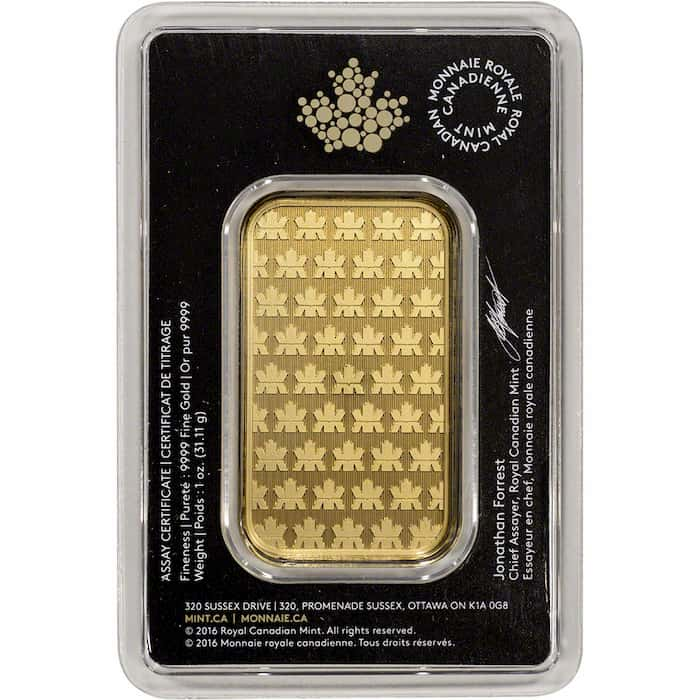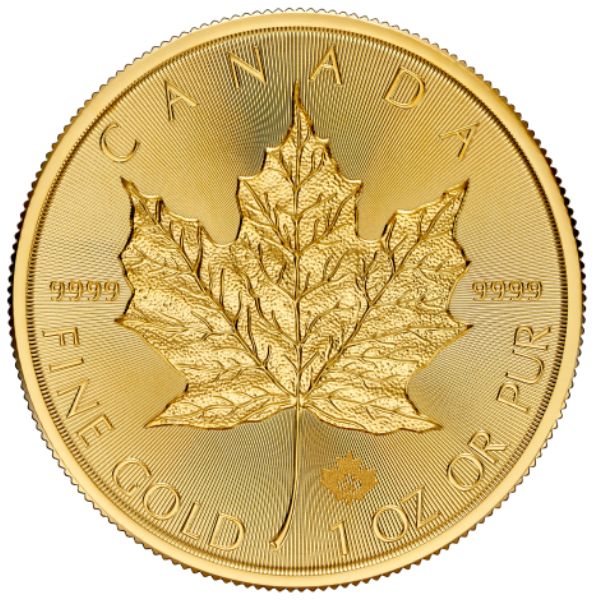How Much Gold Should You Really Own?

In 2024, a growing number of investors are turning to gold coins and bars to build their portfolios. It isn’t hard to see why. With the global economy struggling and the threat of conflict along the Red Sea looming, gold presents itself as an excellent protection against anything 2024 might throw at us.
But investors have one important question to answer before they start filling their home safe with gold bullion: how much gold should you really own?
Figuring out how much gold you should own can be tricky. Ultimately, the answer depends on your investment objectives, risk tolerance, and age. According to financial experts, most investors make precious metals like gold anywhere from 1-10 percent of the total value of their portfolios.
Today, we’re walking readers through everything they need to know about buying gold the right way. Aside from exploring how much gold you should own, we’re also going to take a look at the best way to invest in gold this year.
Is Gold a Good Investment in 2024?
2024 is heating up to be a promising year for gold investors. Of course, it’s impossible to predict where gold prices will go in the next few months. If we knew how to predict gold prices, we’d all be billionaires.
The available evidence suggests that gold seems to increase in price when the traditional economy struggles. Key indicators like rising inflation, hiking interest rates, and less-than-promising employment numbers are good signs for gold’s value.
While recent signals from the Federal Reserve and the Bureau of Labor Statistics suggest an early 2024 recovery for the U.S. economy, some experts aren’t convinced that the traditional market is on the mend.
When we combine these concerns with the ever-present threat of violent conflict along the Red Sea, many gold stackers are optimistic about where the precious metal is heading in 2024.
How Much Gold Should You Own?
If you’re ready to start adding quality gold bullion bars and rounds to your portfolio, you have an important decision to make: how much gold should you really own? According to traditional financial advice, investors should limit gold investments to 10% (or less) of the total value of their investment portfolios.
Traditional Financial Advice
We’ll start with the traditional, cookie-cutter advice. Financial advisors always say that diversification is the key to a successful investing journey. This means adding gold, as well as other, more traditional assets to your portfolio.
Many advisors advocate for something called the “ten percent rule” to help investors decide how much gold they should really own.
The 10 Percent Rule
Most investment experts and financial advisors recommend that you invest around ten percent or less of your total investment assets in precious metals like gold bullion.
This is a rough estimate, but any solid advisor will tell you that the amount of money you should spend on precious metals should depend on a number of different factors. Below, we’ll outline some things to consider before you decide to spend a tenth of your investable assets on gold bullion bars and coins.
Factors to Consider
Three main factors should help you decide how much gold you should really own: age, risk tolerance, and portfolio size. Together, understanding these three elements of an investor’s profile helps advisors get a better idea of
Age
Your age is one of the most important things to consider when building your individual investment portfolio. As we get older and closer to retirement, our tolerance for risky investments will naturally decrease. But when investors are young, it makes sense to take some changes and try to hit it big with your portfolio.
Any financial advisor will tell you that the age of an investor plays an essential role in determining the types of investments they should consider. For gold, the metal typically plays a larger role in the portfolios of older investors. Since gold usually appreciates slowly over time, it’s not considered particularly high risk.
Risk Tolerance
Clearly, the age of an investor plays a role in determining how much of a risk they’re willing to take as they build their nest egg for retirement. The older you are, the fewer risks the average financial advisor will recommend you take in your investment portfolio.

Because of gold’s solid history of price performance and its reputation as a minimally volatile physical asset, it typically plays its biggest role in older investors’ portfolios. The ten percent rule still applies to most older investors, as gold still carries some inherent risk and shouldn’t be the only asset you use to save for retirement.
Therefore, it makes sense that older investors with less time to waste recouping losses would veer closer to the 10% end of the 1-10% gold investment threshold. Younger investors who still have some time to gamble on some riskier Wall Street bets might only allow gold a meager 1% of their overall assets.
Portfolio Size
Of course, people with larger portfolios can afford to collect more gold for their personal safes. As we explained earlier, most investors still recommend you put a maximum of 10% of your total investable money into gold bullion bars and coins. Depending on the total size of your investment portfolio, this can mean a little – or quite a lot – of pure gold.
How much gold should you really own? Although Hero Bullion isn’t a financial advisor, you should track gold investments by percentage – not just total weight. If you’re working with a portfolio of $500,000 and you’re reaching advanced age, you might consider putting $50,000 into gold products.
But if you’re still new to the world of investing and have only $10,000 to your name, even a $500 bet on gold can enrich your portfolio’s diversity without putting you at undue risk.
How to Invest in Gold the Right Way
Now that you have a general idea of how much gold you should really own, it’s time to take a look at how to invest in gold the right way. Whether this is your first or your hundredth gold investment, there are a few things you need to consider before putting your money into beautiful gold bullion bars and coins.
Comparing Different Gold Products
After you’ve decided how much gold you want to own, you’ll need to figure out which specific gold products you should purchase. Gold coins and bars are the main two ways people invest in gold bullion.
Below, we’ll outline the benefits of each choice to help investors decide whether gold coins or bars are right for their precious metal portfolios.
Gold Coins Versus Bars: Which is Right For You?
Gold coins and bars both offer substantial benefits to stackers. Likewise, coins and bars have their own downsides.
Gold coins are a great option for people who prefer numismatic coins, or coins that are valuable for more than just their gold bullion content. These coins often feature high purity gold bullion, and their designs help to make them far easier to sell than some basic gold bars.
However, gold coins are also sold at some of the highest premiums over spot price in the industry. How much gold should you really own in gold coins? The answer depends mostly on your own budget and preferences. Gold coins are sold at a markup because of their popularity, numismatic value, and beauty.

Gold bars are a popular alternative to coins for investors who prefer to buy as much gold as they can for their money. The downside, of course, is that gold bars don’t come with all the numismatic bells and whistles we find on the world’s most popular gold coins.
This means that gold bars are really only as valuable as the current spot price of gold. Gold bars almost always feature .999 or .9999 fine gold bullion, which makes them more pure than some coins, such as the .9167 pure American Gold Eagle Coin.
Gold bars also come with some of the lowest premiums in the industry. Because they cost less to make and don’t feature the intricate designs and numismatic value associated with coins, gold bars are a great way to stack gold bullion without breaking the bank.
Regardless of whether you go with gold coins or bars, Hero Bullion offers competitive pricing to help you stack with confidence – and without overspending on unnecessary precious metal premiums.
Finding a Reputable Dealer
Finding a gold dealer you can trust is extremely important. How much gold should you really own? We recommend planning your gold stack based around what kind of deal you can get on a given set of investments.
If you work closely with a reputable precious metal dealer like Hero Bullion, you might be able to save a considerable amount of money when you make purchases of gold, silver and platinum. We aren’t the only dealer around, so feel free to compare prices across multiple online gold distributors before making your next purchase.

Still, finding a reputable dealer is only part of the process while you decide how much gold you should own. Be sure to also take a careful look at gold prices and premium fees when you start adding the precious metal to your portfolio.
How to Compare Gold Prices
Most investors only pay attention to the total cost, or the sticker price, of a gold coin or bar. In all reality, you should also be looking at gold’s spot price and the premiums charged by your dealer. Both of these components combine to make up the total fee you’ll be charged to buy a gold coin or bar.
Understanding Gold Premiums and Shipping Fees
Gold premiums are small (or large) fees added to the top of a product’s melt value. Remember, you can determine a gold bar’s melt value by multiplying its weight in troy ounces by the current spot price of gold.
But as you’ll notice as you shop for coins and bars, processed gold bullion products are never sold for exactly their melt value. Instead, these items are sold for melt value plus an additional fee called a “premium.”
Premium prices can vary based on a number of factors, including demand, numismatics, and popularity. We recommend looking for gold dealers with honest pricing models and competitively low premium fees.
Timing the Gold Market
How much gold should you really own, and what’s the best time to buy gold? Generally, gold tends to perform well during times of economic insecurity or instability. When the traditional market starts to falter, investors turn to gold and other precious metals. This is because precious metals are considered safe haven assets. They maintain – or gain- value while traditional markets struggle.
But timing the market is a skill that can take decades to learn. For most retail gold investors, it’s best to try to buy when prices are low and hold onto your investments until the price of gold increases.
Is Now a Good Time to Buy Gold Bars and Coins?
Now might be a great time to buy gold bullion, but it’s impossible to say for sure. Gold usually performs best during times of economic or geopolitical instability. If 2024 is a year full of global conflict and a floundering United States economy, then gold may be a fantastic choice for investors.
As always, we recommend caution, as well as the advice of certified financial advisors. Hero Bullion is a gold and silver dealer, but we always want our customers to be as informed as possible while they search for the next additions to their precious metal portfolios.
Final Thoughts: How Much Gold Should You Really Own?
So how much gold should you really own? Your age, risk tolerance, and portfolio size all play roles in determining how much of the world’s most popular precious metal you should have in your home safe.
As a general rule, advisors tend to recommend limiting gold to 10% or less of the total value of your investment portfolio. However, the exact recommended amount of gold you should buy depends on a number of considerations that only you truly know.
You might also be interested in:
About The Author
Michael Roets
Michael Roets is a writer and journalist for Hero Bullion. His work explores precious metals news, guides, and commentary.
